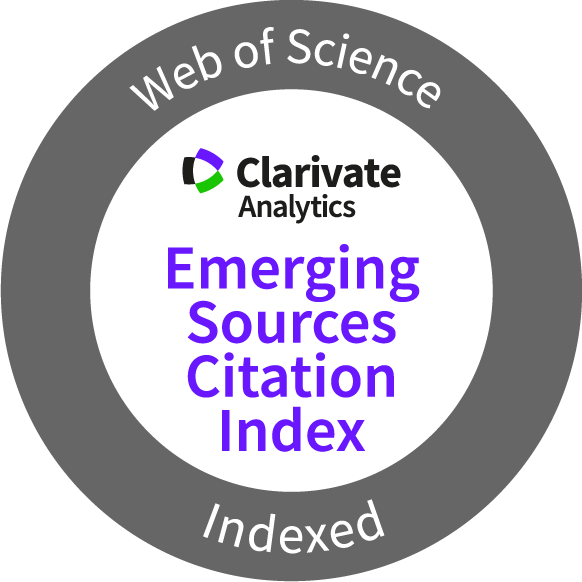Global and Malaysian Aromatic Rice: A Comparative Review on The Quality, Production, and Breeding Spectra
Keywords:
AROMATIC RICE, BREEDING STRATEGIES, ESSENTIAL QUALITY, GLOBAL, MALAYSIA, PRODUCTION TRENDSAbstract
Aromatic rice is a premium rice variety due to multiple distinctive essential qualities viz., strong aroma, long grain, intermediate amylose content, and intermediate gelatinization temperature. The strong aroma is majorly contributed by 2-acetyl-1-pyrroline (2AP), a volatile organic compound that is 10-100% higher in aromatic rice. The long grain represents a large endosperm that contains more starch and nutrients. Intermediate amylose content in aromatic rice is preferred as the rice becomes moist and tender upon cooking. As for the gelatinization temperature (GT), aromatic rice has an intermediate GT which defines a shorter time in cooking. In the world, major aromatic rice cultivars include Basmati (India & Pakistan) and Khao Dawk Mali 105 (Thailand). The production of the aforementioned varieties as well as other minorities is declining due to multiple constraints. The demand-export clash, climate change, disease outbreaks, and other abiotic factors have proven challenging for all rice industrial players. Several breeding techniques are practiced in combatting those problems. In the past, conventional pure line breeding had proven to initiate the cultivation of Basmati-370 (India) and Khao Dawk Mali 105 (Thailand). However, hybrid breeding (combination of desirable traits) is a much more effective breeding method through the release of Pusa Basmati-1 (India), Lateefy (Pakistan), and MRQ104 (Malaysia). From the genetic perspective, quantitative traits locus (QTL) mapping is used to assist in the breeding of aromatic rice cultivars. QTL mapping successfully improved yield, agronomic traits, and stress resistance by providing a strong foundation for advanced in-depth breeding technologies including marker-assisted selection (MAS), mutagenesis, and CRISPR/Cas9 mediated genome editing.
Downloads
Metrics
References
Ahmad, Z., Hussein, S. & Noordin, N. 2020. Bekalan makanan mapan dengan penghasilan varieti baharu tanaman menggunakan teknologi nuklear. i-Nuklear, 2020 (1): 5–9.
Ahmed, M., Bashar, M., Wazuddin, M. & Shamsuddin, A. 2015. Genetic divergence of Jesso-Balam rice (Oryza sativa L.) of Bangladesh. International Journal of Agricultural Research, Innovation and Technology (IJARIT), 5: 22–27. DOI: https://doi.org/10.3329/ijarit.v5i1.24583
Ahn, S., Bollich, C. & Tanksley, S. 1992. RFLP tagging of a gene for aroma in rice. Theoretical and Applied Genetics, 84: 825–828. DOI: https://doi.org/10.1007/BF00227391
Akhter, M. & Haider, Z. 2020. Basmati rice production and research in Pakistan. In: Sustainable Agriculture Reviews 39. E. Lichtfouse (Ed.), Springer International Publishing, Cham. pp. 119–136. DOI: https://doi.org/10.1007/978-3-030-38881-2_5
Aljumaili, S.J., Rafii, M., Latif, M., Sakimin, S.Z., Arolu, I.W. & Miah, G. 2018. Genetic diversity of aromatic rice germplasm revealed by SSR markers. BioMed Research International, 2018(1). DOI: https://doi.org/10.1155/2018/7658032
Amiteye, S. 2021. Basic concepts and methodologies of DNA marker systems in plant molecular breeding. Heliyon, 7(10). DOI: https://doi.org/10.1016/j.heliyon.2021.e08093
Amnuaylojaroen, T., Chanvichit, P., Janta, R. & Surapipith, V. 2021. Projection of rice and maize productions in northern Thailand under climate change scenario RCP8.5. Agriculture, 11(1). DOI: https://doi.org/10.3390/agriculture11010023
Arabzai, M.G. & Gul, H. 2021. Application techniques of molecular marker and achievement of marker assisted selection (MAS) in three major crops rice, wheat and maize. International Journal for Research in Applied Sciences and Biotechnology, 8(1): 82–93. DOI: https://doi.org/10.31033/ijrasb.8.1.10
Ariff, E.E.E., Rahim, H., Harun, R. & Sobri, A.A. 2019. Fragrant rice overview: benefits and implications of local production. Economic and Technology Management Review, 14.
Arikit, S., Wanchana, S., Khanthong, S., Saensuk, C., Thianthavon, T., Vanavichit, A. & Toojinda, T. 2019. QTL-seq identifies cooked grain elongation QTLs near soluble starch synthase and starch branching enzymes in rice (Oryza sativa L.). Scientific Reports, 9(1): 8328. DOI: https://doi.org/10.1038/s41598-019-44856-2
Arshad, H.M., Khan, J.A., Saleem, K., Alam, S.S. & Sahi, S.T. 2020. Bacterial leaf blight (BLB) disease incidence and severity in basmati and non-basmati rice growing areas of Punjab, Pakistan. International Journal of Phytopathology, 9(3): 157–163. DOI: https://doi.org/10.33687/phytopath.009.03.3417
Arunrat, N., Pumijumnong, N. & Hatano, R. 2018. Predicting local-scale impact of climate change on rice yield and soil organic carbon sequestration: a case study in Roi Et Province, Northeast Thailand. Agricultural Systems, 164: 58–70. DOI: https://doi.org/10.1016/j.agsy.2018.04.001
Ashokkumar, S., Jaganathan, D., Ramanathan, V., Rahman, H., Palaniswamy, R., Kambale, R. & Muthurajan, R. 2020. Creation of novel alleles of fragrance gene OsBADH2 in rice through CRISPR/Cas9 mediated gene editing. PLoS One, 15(8). DOI: https://doi.org/10.1371/journal.pone.0237018
Aslam, H.M.U., Naveed, K., Hussain, S.I., Shakeel, Q., Ashraf, W., Anwaar, H.A., Raza, M.M., Sarfraz, S. & Tariq, I. (2021). First report of brown leaf spot of rice caused by Bipolaris zeicola in Pakistan. Plant Disease, 105(1): 212. DOI: https://doi.org/10.1094/PDIS-04-20-0838-PDN
Astro Awani. 2024. Cuaca panas jejas pengeluaran padi di Kelantan [WWW Document]. URL https://www.astroawani.com/berita-malaysia/cuaca-panas-jejas-pengeluaran-padi-di-kelantan-465328 (accessed 04.15.24).
Bansal, K. 2021. Case study of rice tech (India-US dispute) and transformation of India from Trademark Act to Sui Generis system. International Journal of Management & Human, 2(4): 2453.
Behera, P.K. & Panda, D. 2023. Germplasm resources, genes and perspective for aromatic rice. Rice Science, 30(4): 294–305. DOI: https://doi.org/10.1016/j.rsci.2023.03.011
Beltran, J.C., Daplin, K.M.A., Relado-Sevilla, R.Z., Bordey, F.H., Manalili, R.G., Arida, I.A. & Chua, J.D. 2021. Productivity and profitability of aromatic rice production in the Philippines. International Journal of Sustainable Agricultural Research, 8(4): 209–221. DOI: https://doi.org/10.18488/journal.70.2021.84.209.221
BERNAS. 2023. Beras wangi / fragrant rice [WWW Document]. URL https://bernas.com.my/fragrant-rice (accessed 04.18.24).
Bhattacharjee, P., Singhal, R.S. & Kulkarni, P.R. 2002. Basmati rice: a review. International Journal of Food Science & Technology, 37(1): 1–12. DOI: https://doi.org/10.1046/j.1365-2621.2002.00541.x
Blakeney, M., Krishnankutty, J., Raju, R.K. & Siddique, K.H. 2020. Agricultural innovation and the protection of traditional rice varieties: Kerala a case study. Frontiers in Sustainable Food Systems, 3: 116. DOI: https://doi.org/10.3389/fsufs.2019.00116
Boonwichai, S., Shrestha, S., Babel, M.S., Weesakul, S. & Datta, A. 2018. Climate change impacts on irrigation water requirement, crop water productivity and rice yield in the Songkhram river basin, Thailand. Journal of Cleaner Production, 198: 1157–1164. DOI: https://doi.org/10.1016/j.jclepro.2018.07.146
Bradbury, L.M., Fitzgerald, T.L., Henry, R.J., Jin, Q. & Waters, D.L. 2005. The gene for fragrance in rice. Plant Biotechnology Journal, 3(3): 363–370. DOI: https://doi.org/10.1111/j.1467-7652.2005.00131.x
Butardo, V.M., Sreenivasulu, N. & Juliano, B. O. 2019. Improving rice grain quality: state-of-the-art and future prospects. In: Rice grain quality: methods and protocols. S. Nese (Ed.). Humana Press, Cham. pp. 19–55. DOI: https://doi.org/10.1007/978-1-4939-8914-0_2
Central Rice Research Institute (CRRI). 2013. Vision 2050 [WWW Document]. URL https://icar-nrri.in/wp-content/uploads/2019/08/ebook_crrivision2050_final_16Jan13.pdf (accessed 04.15.24).
Chan-In, P., Jamjod, S., Yimyam, N., Rerkasem, B. & Pusadee, T. 2020. Grain quality and allelic variation of the Badh2 gene in Thai fragrant rice landraces. Agronomy, 10(6): 779. DOI: https://doi.org/10.3390/agronomy10060779
Chen, J., Pu, D., Shi, Y., Sun, B., Guo, H., Li, K. & Zhang, Y. 2023. Characterization of the key aroma compounds in different yeast proteins by GC-MS/O, sensory evaluation, and e-nose. Foods, 12(16): 3136. DOI: https://doi.org/10.3390/foods12163136
Chukwu, S.C., Rafii, M.Y., Ramlee, S.I., Ismail, S.I., Oladosu, Y., Okporie, E., Onyishi, G., Utobo, E., Ekwu, L., Swaray, S. & Jalloh, M. 2019. Marker-assisted selection and gene pyramiding for resistance to bacterial leaf blight disease of rice (Oryza sativa L.). Biotechnology & Biotechnological Equipment, 33(1): 440–455. DOI: https://doi.org/10.1080/13102818.2019.1584054
Cruz, N.D., & Khush, G. 2000. Rice grain quality evaluation procedures. In: Aromatic rices. N.D. Cruz & G. Khush (Eds.). Oxford & IBH Publishing Company Private Limited, New Delhi. pp. 15–28.
Custodio, M.C., Cuevas, R.P., Ynion, J., Laborte, A.G., Velasco, M.L. & Demont, M. 2019. Rice quality: How is it defined by consumers, industry, food scientists, and geneticists?. Trends in Food Science & Technology, 92: 122–137. DOI: https://doi.org/10.1016/j.tifs.2019.07.039
Dewi, A., Dwimahyani, I. & Sobrizal. 2020. Application of induced mutation technique to improve genetic variability of Indonesian traditional rice varieties. In: The 1st International Conference on Genetic Resources and Biotechnology. The Institute of Physics Publishing (IOP), United Kingdom. DOI: https://doi.org/10.1088/1755-1315/482/1/012016
Dhawan, G., Kumar, A., Dwivedi, P., Gopala Krishnan, S., Pal, M., Vinod, K.K., Nagarajan, M., Bhowmick, P.K., Bollinedi, H. & Ellur, R.K. 2021. Introgression of qDTY1.1 governing reproductive stage drought tolerance into an elite basmati rice variety “Pusa Basmati 1” through marker assisted backcross breeding. Agronomy, 11(2): 202. DOI: https://doi.org/10.3390/agronomy11020202
Durland, J. & Ahmadian-Moghadam, H. 2021. Genetics, Mutagenesis [WWW Document]. URL https://www.ncbi.nlm.nih.gov/books/NBK560519/ (accessed 04.15.24).
Dwiningsih, Y. & Alkahtani, J. 2022a. Rojolele: a premium aromatic rice variety in Indonesia. International Journal of Agricultural Sciences and Technology, 2(2): 42–53. DOI: https://doi.org/10.51483/IJAGST.2.2.2022.42-53
Dwiningsih, Y. & Alkahtani, J. 2022b. Agronomics, genomics, breeding and intensive cultivation of Ciherang rice variety. International Journal of Agricultural Sciences and Technology, 2(2): 11–26. DOI: https://doi.org/10.51483/IJAGST.2.2.2022.11-26
Ebram, S.Y., Sachdeva, J. & Guleria, A. 2021. Production efficiency and marketing constraints of basmati rice in Punjab: an economic analysis. Journal of Agricultural Development and Policy, 31(2): 153–160.
Fahad, S., Adnan, M., Noor, M., Arif, M., Alam, M., Khan, I.A., Ullah, H., Wahid, F., Mian, I.A. & Jamal, Y. 2019. Major constraints for global rice production. In: Advances in rice research for abiotic stress tolerance. M. Hasanuzzaman, M. Fujita, K. Nahar & J.K. Biswas (Eds.). Elsevier, Amsterdam. pp. 1–22. DOI: https://doi.org/10.1016/B978-0-12-814332-2.00001-0
Firdaus, R.R., Leong Tan, M., Rahmat, S. R. & Senevi Gunaratne, M. 2020. Paddy, rice and food security in Malaysia: a review of climate change impacts. Cogent Social Sciences, 6(1). DOI: https://doi.org/10.1080/23311886.2020.1818373
Fiyaz, R.A., Yadav, A.K., Krishnan, S.G., Ellur, RK., Bashyal, B. M., Grover, N., Bhowmick P.K., Nagarajan, M., Vinod, K.K. & Singh, N.K. 2016. Mapping quantitative trait loci responsible for resistance to bakanae disease in rice. Rice, 9(1): 1–10. DOI: https://doi.org/10.1186/s12284-016-0117-2
Food & Agriculture Organization (FAO). 2022. World food and agriculture - statistical yearbook 2022. Food & Agriculture Organization (FAO), Rome.
Food & Agriculture/International Atomic Energy Agency Joint Division (FAO/IAEA). 2024. IAEA mutant variety database [WWW Document]. URL https://nucleus.iaea.org/sites/mvd (accessed 04.15.24).
Gaur, A., Wani, H.S., Pandita, D., Bharti, N., Malav, A., Shikari, A. & Bhat, A. 2016. Understanding the fragrance in rice. Journal of Rice Research, 4(1). DOI: https://doi.org/10.4172/2375-4338.1000e125
Golam, F. & Prodhan, Z.H. 2013. Kernel elongation in rice. Journal of the Science of Food and Agriculture, 93(3): 449–456. DOI: https://doi.org/10.1002/jsfa.5983
Hamid, M.S. (2021). Varieti beras wangi terbaik dihasilkan MARDI tahun depan. [WWW Document]. URL https://www.kosmo.com.my/2021/11/01/varieti-beras-wangi-terbaik-dihasilkan-mardi-tahun-depan/ (accessed 04.15.24).
Haque, M.A., Rafii, M.Y., Yusoff, M.M., Ali, NS., Yusuff, O., Datta, D.R., Anisuzzaman, M. & Ikbal, M.F. 2021. Recent advances in rice varietal development for durable resistance to biotic and abiotic stresses through marker-assisted gene pyramiding. Sustainability, 13(19). DOI: https://doi.org/10.3390/su131910806
Hasan, N.A., Rafii, M.Y., Rahım, H.A., Ahmad, F. & Ismail, N. 2020. Identification of bacterial leaf blight resistance genes in Malaysian local rice varieties. Genetics and Molecular Research, 19(3). DOI: https://doi.org/10.4238/gmr18545
Hassan, A., Shahzad, A.N. & Qureshi, M.K. 2022. Rice production and crop improvement through breeding and biotechnology. In: modern techniques of rice crop production. B. Hussain, S.H. Shah, A. Matloob, R. Mubaraka, N. Ahmed, I. Ahmad & M. U. Jamshaid (Eds.). Springer International Publishing, Singapore. pp. 605–627. DOI: https://doi.org/10.1007/978-981-16-4955-4_30
Hazim, M. & Yap, S.E. (2024). Petani tertekan perubahan iklim, birokrasi ancam keterjaminan makanan [WWW Document]. URL https://www.malaysiakini.com/news/691960 (accessed 04.15.24).
Henkrar, F. & Udupa, S. 2020. Marker assisted selection in plant breeding. Moroccan Journal of Agricultural Sciences, 1(5).
Herwibawa, B., Sakhidin & Haryanto, T.A.D. 2019. Agronomic performances of aromatic and non-aromatic M1 rice under drought stress. Open Agriculture, 4(1): 575–584. DOI: https://doi.org/10.1515/opag-2019-0055
Hinge, V.R., Patil, H.B. & Nadaf, A.B. 2016. Aroma volatile analyses and 2AP characterization at various developmental stages in basmati and non-basmati scented rice (Oryza sativa L.) cultivars. Rice, 9(1): 1–22. DOI: https://doi.org/10.1186/s12284-016-0113-6
Hossain, M. A., Hassan, L., Iftekharuddaula, K. M., Kumar, A., & Henry, R. 2021. Molecular breeding for rice abiotic stress tolerance and nutritional quality. John Wiley & Sons Publication, West Sussex. 464 pp. DOI: https://doi.org/10.1002/9781119633174
Hu, X., Lu, L., Guo, Z. & Zhu, Z. 2020. Volatile compounds, affecting factors and evaluation methods for rice aroma: a review. Trends in Food Science & Technology, 97: 136–146. DOI: https://doi.org/10.1016/j.tifs.2020.01.003
Hussein, S., Harun, A.R., Simoli, J.M.A., Wahab, M.R.A., Salleh, S., Ahmad, F., Hoe, P.C.K., Rahman, S.A.A., Ahmad, N.A.W., Nordin, L., Tanaka, A., Kiong, A.L.P., Yian, K.R., Yusop, M.R., Asma, I.K., Ramachandran, K., Hase, Y., Koiki, A., Noorman, A.M., Kamaruzaman, R., Hasan, N.A., Shamsudin, N.A.A. & Hashim, N.M. 2020. Mutation breeding of rice for sustainable agriculture in Malaysia. In: Forum for Nuclear Cooperation in Asia (FNCA) 2020. Ministry of Education, Culture, Sports, Science, and Technology (MEXT), Tokyo. pp. 30–58.
Ibrahim, A.,Z. 2024. Gelombang Padi perlu tumpu isu bekalan input, lindungi pesawah [WWW Document]. URL https://www.bharian.com.my/rencana/lain-lain/2024/02/1210172/gelombang-padi-perlu-tumpu-isu-bekalan-input-lindungi-pesawah (accessed 04.20.24).
Imran, M., Shafiq, S. & Tang, X. 2023. CRISPR-Cas9-mediated editing of BADH2 gene triggered fragrance revolution in rice. Plant Physiology, 175. DOI: https://doi.org/10.1111/ppl.13871
International Atomic Energy Agency (IAEA). 2002. Mutant germplasm characterization using molecular markers: a manual. International Atomic Energy Agency (IAEA) Publication, Vienna.
International Rice Research Institute (IRRI). 2013. IRRI - Standard evaluation system of rice (5 ed.). International Rice Research Institute (IRRI), Los Banos, Phillipines.
Islam, M., Khalequzzaman, M., Bashar, M., Ivy, N., Haque, M., Mian, M. & Tomita, M. 2018. Agro-morphological characterization of Bangladeshi aromatic rice (Oryza sativa L.) germplasm based on qualitative traits. Bangladesh Rice Journal, 22(2): 41–54. DOI: https://doi.org/10.3329/brj.v22i2.44041
Jabran, M., Abbas, A., Sabar, G., Mustafa, G. & Ali, M.A. 2019. Prevalence, incidence and severity of brown spot of rice in major rice growing areas of Punjab, Pakistan. Pakistan Journal of Phytopathology, 31(2): 193–199.
Jaiswal, H., Waza, S. A. & Sravan, T. 2015. HUBR-16: A high yielding early maturity rice line coupled with extra long kernel and high kernel elongation. Indian Journal of Plant Genetic Resources, 28(2): 260–262. DOI: https://doi.org/10.5958/0976-1926.2015.00032.7
Jamal, K., Kamarulzaman, N., Abdullah, A., Ismail, M. & Hashim, M. 2014. Adoption of fragrant rice farming: the case of paddy farmers in the east coast Malaysia. Universiti Malaysia Kelantan (UMK) Procedia, 1: 8–17. DOI: https://doi.org/10.1016/j.umkpro.2014.07.002
Javed, I., Rehman, A., Nabi, I., Razzaq, A., Saqib, R., Bakhsh, A., Mohibullah, M. & Luqman, M. 2020. Performance and macroeconomic determinants of basmati rice exports from Pakistan. Sarhad Journal of Agriculture, 36(2): 617–624. DOI: https://doi.org/10.17582/journal.sja/2020/36.2.617.624
Jingfang, L., Shuyue, W., Lijun, Z., Tingmu, C., Zhenling, Z., Zhiguang, S., Yan, L., Haiyuan, C., Yunhui, Z. & Ming, C. 2023. Development of aromatic salt-tolerant rice based on CRISPR/Cas9 technology. Chinese Journal of Rice Science, 37(5): 478.
Jirapornvaree, I., Suppadit, T. & Kumar, V. 2021. Assessing the economic and environmental impact of jasmine rice production: Life cycle assessment and life cycle costs analysis. Journal of Cleaner Production, 303. DOI: https://doi.org/10.1016/j.jclepro.2021.127079
Jongdee, B., Pantuwan, G., Fukai, S. & Fischer, K. 2006. Improving drought tolerance in rainfed lowland rice: an example from Thailand. Agricultural Water Management, 80(1-3): 225–240. DOI: https://doi.org/10.1016/j.agwat.2005.07.015
Jonit, N., Low, Y. & Tan, G. 2016. Xanthomonas oryzae pv. oryzae, biochemical tests, rice (Oryza sativa), bacterial leaf blight (BLB) disease, Sekinchan. Journal of Applied Environmental Microbiology, 4(3): 63–69.
Juliano, B.O. 1972. Physicochemical properties of starch and protein and the irrelation to grain quality and nutritional value of rice. In: Rice breeding. International Rice Research Institute, Los Baños, Philippines. pp. 389–405.
Kaewmungkun, K., Tongmark, K., Chakhonkaen, S., Sangarwut, N., Wasinanon, T., Panyawut, N., Ditthab, K., Sikaewtung, K., Qi, Y-b. & Dapha, S. 2023. Development of new aromatic rice lines with high eating and cooking qualities. Journal of Integrative Agriculture, 22(3): 679–690. DOI: https://doi.org/10.1016/j.jia.2022.07.001
Kaufman, R., Wilson, J., Bean, S., Herald, T. & Shi, Y.-C. 2015. Development of a 96-well plate iodine binding assay for amylose content determination. Carbohydrate Polymers, 115: 444–447. DOI: https://doi.org/10.1016/j.carbpol.2014.09.015
Kesh, H. & Khan, M. 2023. Varietal characterization and variables investigation for basmati rice enotypes adaptation in wet direct seeding and system of rice intensification. International Journal of Plant Production: 1–19. DOI: https://doi.org/10.1007/s42106-023-00261-4
Khanh, T.D., Duong, V.X., Nguyen, P.C., Xuan, T.D., Trung, N.T., Trung, KH., Gioi, D.H., Hoang, N.H., Tran, H-D. & Trung, D.M. 2021. Rice breeding in Vietnam: retrospects, challenges and prospects. Agriculture, 11(5): 397. DOI: https://doi.org/10.3390/agriculture11050397
Khush, G. & Juliano, B. 1985. Breeding for high-yielding rices of excellent cooking and eating qualities. In: rice grain quality and marketing. International Rice Research Institute (Ed.). International Rice Research Institute, Manila, Philippines. pp. 61–69.
Kongchum, M., Harrell, D.L. & Linscombe, S.D. 2022. Comparison of 2-acetyl-1-pyrroline (2AP) in rice leaf at different growth stages using gas chromatography. Agricultural Sciences, 13(2): 165–176. DOI: https://doi.org/10.4236/as.2022.132013
Korinsak, S., Wongsaprom, C., Jamboonsri, W., Sriprakhon, S., Sirithunya, K., Vanavichit, A. & Toojinda, T. 2022. Identification of broad-spectrum resistance QTLs against rice blast fungus and their application in different rice genetic backgrounds. Journal of Genetics, 101(1): 16. DOI: https://doi.org/10.1007/s12041-021-01357-4
Kour, A., Kumar, B. & Singh, B. 2019. Genetic evaluation of yield and yield attributing traits in rice (Oryza sativa L.) using line x tester analysis. Electronic Journal of Plant Breeding, 10(1): 39–46. DOI: https://doi.org/10.5958/0975-928X.2019.00005.X
Krishnankutty, J., Blakeney, M., Raju, R. & Siddique, K. 2021. Sustainability of traditional rice cultivation in Kerala, India - a socio-economic analysis. Sustainability 2021, 13 (980): 71. DOI: https://doi.org/10.3390/su13020980
Laha, G., Singh, R., Ladhalakshmi, D., Sunder, S., Prasad, M.S., Dagar, C. & Babu, V.R. 2017. Importance and management of rice diseases: a global perspective. Rice Production Worldwide: 303–360. DOI: https://doi.org/10.1007/978-3-319-47516-5_13
Lalitha, N. & Vinayan, S. 2019. Regional products and rural livelihoods: a study on geographical indications from India. Oxford University Press, New Delhi. 220 pp.
Li, N., Xu, R., Duan, P. & Li, Y. 2018. Control of grain size in rice. Plant Reproduction, 31(3): 237–251. DOI: https://doi.org/10.1007/s00497-018-0333-6
Limnirankul, B., Onprapai, T. & Gypmantasiri, P. 2015. Building local capacities in natural resources management for food security in the highlands of northern Thailand. Agriculture and Agricultural Science Procedia, 5: 30–37. DOI: https://doi.org/10.1016/j.aaspro.2015.08.005
Lina, G. & Min, Z. 2022. Formation and release of cooked rice aroma. Journal of Cereal Science, 107: 103523. DOI: https://doi.org/10.1016/j.jcs.2022.103523
Luo, H., Duan, M., Xing, P., Xie, H. & Tang, X. 2022. Foliar application of procyanidins enhanced the biosynthesis of 2-acetyl-1-pyrroline in aromatic rice (Oryza sativa L.). BMC Plant Biology, 22(1): 1–9. DOI: https://doi.org/10.1186/s12870-022-03775-7
Mahajan, G., Sharma, N. & Bharaj, T. 2009. Grain yield, water productivity and quality characteristics of basmati rice in response to cultivars and transplanting dates. International Journal of Plant Breeding, 3: 46–51.
Mahajan, G., Kumar, V. & Chauhan, B.S. 2017. Rice Production in India. In: Rice production worldwide. B. Chauhan, K. Jabran & G. Mahajan (Eds.). Springer International Publishing, New Delhi. DOI: https://doi.org/10.1007/978-3-319-47516-5_3
Malik, A., Kumar, A., Ellur, R.K., Gopala Krishnan, S., Vinod, K.K., Dixit, D., Nagarajan, M., Bhowmick, P.K., Bollinedi, H., Singh, N.K. & Singh, A.K. (2023). Novel quantitative trait loci for yield and yield related traits identified in basmati rice (Oryza sativa). Plant Breeding, 142(3): 327–337. DOI: https://doi.org/10.1111/pbr.13085
Ministry of Agriculture & Food Industry (MAFI). 2021. Dasar Agromakanan Negara 2021-2030. Ministry of Agriculture & Food Industry (MAFI), Kuala Lumpur.
Mishra, R., Joshi, R. K. & Zhao, K. (2018). Genome editing in rice: recent advances, challenges, and future implications. Frontiers in Plant Science, 9: 1361. DOI: https://doi.org/10.3389/fpls.2018.01361
Mutalib, M.H.A. 2023. Hasil padi rendah: Tiga perkara asas utama masih gagal selesai [WWW Document]. URL https://www.utusan.com.my/berita/2023/05/hasil-padi-rendah-tiga-perkara-asas-utama-masih-gagal-selesai/ (accessed 04.15.24).
Nader, W., Elsner, J., Brendel, T. & Schubbert, R. 2019. The DNA fingerprint in food forensics: the basmati rice case. Agro Food Industry Hi Tech, 30(6): 57–61.
Nakwilai, P., Cheabu, S., Narumon, P., Saensuk, C., Arikit, S. & Malumpong, C. 2020. Evaluation of japonica rice (Oryza sativa L.) varieties and their improvement in terms of stability, yield and cooking quality by pure-line selection in Thailand. Science Asia, 46: 157–168. DOI: https://doi.org/10.2306/scienceasia1513-1874.2020.46.157
Ndikuryayo, C., Ndayiragije, A., Kilasi, N. & Kusolwa, P. (2022). Breeding for rice aroma and drought tolerance: a review. Agronomy, 12(7): 1726. DOI: https://doi.org/10.3390/agronomy12071726
Nikitha, M. & Natarajan, V. 2020. Properties of south-Indian rice cultivars: physicochemical, functional, thermal and cooking characterisation. Journal of Food Science and Technology, 57: 4065–4075. DOI: https://doi.org/10.1007/s13197-020-04440-3
Okasa, A.M., Sjahril, R., Riadi, M., Mahendradatta, M., Sato, T., Toriyama, K., Ishii, K., Hayashi, Y. & Abe, T. 2021. Correlation and path coefficient analysis of grain yield and its components in toraja land-race aromatic rice mutants induced by heavy ion beam. Asian Journal of Plant Sciences, 20(3): 406–413. DOI: https://doi.org/10.3923/ajps.2021.406.413
Okoshi, M., Matsuno, K., Okuno, K., Ogawa, M., Itani, T. & Fujimura, T. 2016. Genetic diversity in Japanese aromatic rice (Oryza sativa L.) as revealed by nuclear and organelle DNA markers. Genetic Resources and Crop Evolution, 63: 199–208. DOI: https://doi.org/10.1007/s10722-015-0239-1
Palanisami, K., Kakumanu, K.R., Nagothu, U.S. & Ranganathan, C. 2019. Climate change and future rice production in India. Springer International Publishing, Singapore. 250 pp. DOI: https://doi.org/10.1007/978-981-13-8363-2
Park, S.-G., Park, H.-S., Baek, M.-K., Jeong, J.-M., Cho, Y.-C., Lee, G.-M., Lee, C.-M., Suh, J.-P., Kim, C.-S. & Kim, S.-M. 2019. Improving the glossiness of cooked rice, an important component of visual rice grain quality. Rice, 12: 1–13. DOI: https://doi.org/10.1186/s12284-019-0348-0
Patel, S.K., Sharma, A. & Singh, G.S. 2020. Traditional agricultural practices in India: an approach for environmental sustainability and food security. Energy, Ecology and Environment, 5: 253–271. DOI: https://doi.org/10.1007/s40974-020-00158-2
Patra, B. & Chakraborti, M. 2020. Rice breeding in India: a journey from phenotype based pure line selection to genomics assisted breeding. Agricultural Research Journal, 57(6). DOI: https://doi.org/10.5958/2395-146X.2020.00120.9
Phuong, N.D. & Hoi, P.X. 2017. gRNA sequence design to specifically modified for OsP5CS gene enhanced drought and salinity tolerance of rice variety BC15 by CRISPR/CAS9. Science, Technology, Agriculture & Rural Development, 19: 19–26.
Prodhan, Z.H. & Qingyao, S. 2020. Rice aroma: a natural gift comes with price and the way forward. Rice Science, 27(2): 86–100. DOI: https://doi.org/10.1016/j.rsci.2020.01.001
Punia, S. & Kumar, M. 2022. Functionality and application of colored cereals: nutritional, bioactive, and health aspects. Elsevier, London. 332 pp.
Radio Televisyen Malaysia (RTM). 2022. Padi MARIA: Tempoh matang singkat, pengeluaran tinggi [WWW Document]. Radio Televisyen Malaysia. URL https://berita.rtm.gov.my/nasional/senarai-berita-nasional/senarai-artikel/padi-maria-tempoh-matang-singkat-pengeluaran-tinggi (accessed 04.15.24).
Rahman, S.N.A., Kamaruzaman, R., Rahim, N.I.A., Othman, M.R. & Sebaweh, N.S. 2020. Varieti padi berpotensi bagi pembangunan varieti padi spesialti. Buletin Teknologi MARDI, 21: 9–18.
Rajamoorthy, Y. & Munusamy, S. 2015. Rice industry in Malaysia: challenges, policies and implications. Procedia Economics and Finance, 31: 861–867. DOI: https://doi.org/10.1016/S2212-5671(15)01183-1
Ramalingam, J., Raveendra, C., Savitha, P., Vidya, V., Chaithra, T.L., Velprabakaran, S., Saraswathi, R., Ramanathan, A., Pillai, M.P.A., Arumugachamy, S. & Vanniarajan, C. 2020. Gene pyramiding for achieving enhanced resistance to bacterial blight, blast, and sheath blight diseases in rice. Frontier in Plant Sciences, 11. DOI: https://doi.org/10.3389/fpls.2020.591457
Ramli, A. 2019. Report on rice R&D at MARDI. MARDI Publication, Serdang.
Ramli, A., Saidon, S.A., Kamaruzaman, R., Sunian, E., Jamal, M.S., Ramachandran, K., Misman, S.N., Masarudin, M.F., Hashim, S., Hosni, H., Rahim., H., Zuki, Z.M. & Sarif, H.M. 2021. Varieti padi MRQ 104 – Padi wangi tempatan baharu. Buletin Teknologi MARDI, 24: 29–39.
Ramli, A.M., Zahari, M.S.M., Halim, N.A. & Aris, M.H.M. 2017. Knowledge on the Malaysian food heritage. Asian Journal of Quality of Life, 2(5): 31–42. DOI: https://doi.org/10.21834/ajqol.v2i5.9
Rathore, R. & Ram, M. 2013. Role of selection in improving cultivars. Popular Kheti, 1(2): 45–48.
Redman, M., King, A., Watson, C. & King, D. 2016. What is CRISPR/Cas9? Archives of Disease in Childhood: Education and Practice, 101(4): 213–215. DOI: https://doi.org/10.1136/archdischild-2016-310459
Rerkasem, B. 2017. The rice value chain: a case study of Thai rice. Chiang Mai University Journal of Social Sciences and Humanities, 4(1): 1–26. DOI: https://doi.org/10.12982/CMUJASR.2017.0001
Rifhani, N.F., Apriana, A., Sisharmini, A., Santoso, T.J., Trijatmiko, K.R., Slamet-Loedin, I.H. & Yunus, A. 2023. Construction of the CRISPR/Cas9 module and genetic transformation of aromatic rice cv. Mentik Wangi for developing bacterial leaf blight resistance. Biodiversitas Journal of Biological Diversity, 24 (6). DOI: https://doi.org/10.13057/biodiv/d240620
Rohmawati, I., Nursusilawati, P. & Abdullah, S. 2021. Genetic diversity of some Indonesian local rice varieties based on Simple Sequence Repeat (SSR) marker related to aromatic genes. In: The 2nd International Conference on Agriculture and Rural Development. Institute of Physics (IOP) Publishing, Bristol, United Kingdom.
Roychoudhury, A. 2020. Rice research for quality improvement: genomics and genetic engineering. Springer International Publishing, Singapore. 777 pp. DOI: https://doi.org/10.1007/978-981-15-4120-9
Roy, S., Banerjee, A., Basak, N., Kumar, J. & Mandal, N. P. 2020. In: The future of rice demand: quality beyond productivity aromatic rice. A. C. de Oliveira, C. Pegoraro & V. E. Viana (Eds.). Springer International Publishing, Cham. pp. 251–282. DOI: https://doi.org/10.1007/978-3-030-37510-2_11
Sabar, M., Shabir, G., Shah, S.M., Aslam, K., Naveed, S.A. & Arif, M. 2019. Identification and mapping of QTLs associated with drought tolerance traits in rice by a cross between Super Basmati and IR55419-04. Breeding Science, 69(1): 169–178. DOI: https://doi.org/10.1270/jsbbs.18068
Saeed, I., Mubarik, A., Umar, F. & Aqsa, Y. 2020. Basmati rice cluster feasibility and transformation study (2020). Cluster development based agriculture transformation plan Vision-2025. Project, (131): 434.
Sagar, V., Dhawan, G., Gopala Krishnan, S., Vinod, K., Ellur, R.K., Mondal, K.K., Rathour, R., Prakash, G., Nagarajan, M. & Bhowmick, P. K. 2020. Marker assisted introgression of genes governing resistance to bacterial blight and blast diseases into an elite basmati rice variety,‘Pusa Basmati 1509’. Euphytica, 216: 1–18. DOI: https://doi.org/10.1007/s10681-019-2549-4
Salgotra, R. 2018. Morphological and grain quality analysis of basmati rice (Oryza sativa L.) under different systems in north-west plains of Himalaya. Electronic Journal of Plant Breeding, 9(3): 1146–1156. DOI: https://doi.org/10.5958/0975-928X.2018.00143.6
Salgotra, R.K., Raina, M., Rathore, R. & Bhat, J.A. (2021). Marker-assisted gene pyramiding (MAGP) for semi dwarfed bacterial blight resistance genes into traditional basmati variety “Ranbir Basmati”. Plant Gene, 26: 100276. DOI: https://doi.org/10.1016/j.plgene.2021.100276
Samal, P., Pote, T., Krishnan, S.G., Singh, A.K., Salgotra, R. & Rathour, R. 2019. Integrating marker-assisted selection and doubled haploidy for rapid introgression of semi-dwarfing and blast resistance genes into a Basmati rice variety ‘Ranbir Basmati’. Euphytica, 215: 1–13. DOI: https://doi.org/10.1007/s10681-019-2473-7
Sansenya, S., Hua, Y., Chumanee, S., Phasai, K. & Sricheewin, C. 2017. Effect of gamma irradiation on 2-acetyl-1-pyrroline content, GABA content and volatile compounds of germinated rice (Thai upland rice). Plants, 6(2): 18. DOI: https://doi.org/10.3390/plants6020018
Sarhadi, W.A., Shams, S., Bahram, G.M. & Sadeghi, M. 2015. Comparison of yield and yield components among different varieties of rice. Global Journal of Biology, Agriculture and Health Sciences, 4(1): 158–163.
Sarwar, A., Hassan, M.N., Imran, M., Iqbal, M., Majeed, S., Brader, G., Sessitsch, A. & Hafeez, F.Y. 2018. Biocontrol activity of surfactin A purified from Bacillus NH-100 and NH-217 against rice bakanae disease. Microbiological Research, 209: 1–13. DOI: https://doi.org/10.1016/j.micres.2018.01.006
Shannon, M., Ratnasekhar, C., McGrath, T.F., Kapil, A.P. & Elliott, C.T. 2021. A two-tiered system of analysis to tackle rice fraud: The Indian basmati study. Talanta, 225: 122038. DOI: https://doi.org/10.1016/j.talanta.2020.122038
Sharma, N. & Khanna, R. 2019. Rice grain quality: current developments and future prospects. In: Recent Advances in Grain Crops Research. F. Shah, Z. Khan, A. Iqbal, M. Turan & M. Olgun (Eds.). IntechOpen Limited, London. pp. 120-140. DOI: https://doi.org/10.5772/intechopen.89367
Sharma, R., Yadav, V. & Yadav, V.K. 2023. Organic production of basmati rice. In: Organic crop production management. D.P. Singh, H.G. Prakash, M. Swapna & S. Solomon (Eds.). Apple Academic Press, New York. pp. 523–543. DOI: https://doi.org/10.1201/9781003283560-32
Sholehah, I.M., Restanto, D.P., Kim, K.-M. & Handoyo, T. 2020. Diversity, physicochemical, and structural properties of Indonesian aromatic rice cultivars. Journal of Crop Science and Biotechnology, 23: 171–180. DOI: https://doi.org/10.1007/s12892-019-0370-0
Shukor, S. (2021). NAFAS, MARDI bekal padi varieti berkualiti [WWW Document]. Utusan Malaysia. URL https://www.utusan.com.my/berita/2021/06/nafas-mardi-bekal-varieti-padi-berkualiti/ (accessed 04.25.24).
Siangliw, M., Toojinda, T., Tragoonrung, S. & Vanavichit, A. (2003). Thai jasmine rice carrying QTLch9 (Sub QTL) is submergence tolerant. Annals of Botany, 91(2): 255–261. DOI: https://doi.org/10.1093/aob/mcf123
Sinar Harian. 2021. Perubahan iklim jejas sekuriti makanan negara [WWW Document]. URL https://www.sinarharian.com.my/article/164965/berita/nasional/ perubahan-iklim-jejas-sekuriti-makanan-negara-pakar (accessed 04.25.24).
Sindhumole, P., Sajini, S. & Waghmare, S.G. 2023. Molecular markers to discriminate between aromatic and non-aromatic tropical rice cultivars. Genetic Resources and Crop Evolution: 1–5. DOI: https://doi.org/10.1007/s10722-023-01668-8
Singh, A.K., Singh, V.K., Singh, A., Ellur, R.K., Pandian, R., Krishnan, S.G., Singh, U.D., Nagarajan, M., Vinod, K.K. & Prabhu, K.V. 2015. Introgression of multiple disease resistance into a maintainer of basmati rice CMS line by marker assisted backcross breeding. Euphytica, 203: 97–107. DOI: https://doi.org/10.1007/s10681-014-1267-1
Singh, N., Singh, B., Rai, V., Sidhu, S., Singh, A.K. & Singh, N.K. 2017. Evolutionary insights based on SNP haplotypes of red pericarp, grain size and starch synthase genes in wild and cultivated rice. Frontiers in Plant Science, 8: 972. DOI: https://doi.org/10.3389/fpls.2017.00972
Singh, R., Singh, U. & Khush, G. 2000. Aromatic rices. Oxford & IBH Publishing Co. Pvt. Ltd., New Delhi. 292 pp.
Singh, S., Singh, M., Kumar, S. & Sravan, U.S. 2019. Cultivation of aromatic rice: a review. In: Agronomic crops: volume 1: production technologies. M. Hasanuzzaman (Ed.). Springer International Publishing, Singapore. pp. 175–198. DOI: https://doi.org/10.1007/978-981-32-9151-5_10
Singh, V. & Kumar, P. 2022. Genetic variability studies on yield and physiological traits in basmati rice under drought environment (Oryza sativa L.). Environment and Ecology, 40(4): 2093–2102.
Songkumarn, P., Chaijuckam, P., Tongsri, V. & Guerrero, J.J.G. 2019. Expression analysis of defense related genes in rice response to Bipolaris oryzae, the causal agent of rice brown spot. Applied Science and Engineering Progress, 12(2): 104–115. DOI: https://doi.org/10.14416/j.asep.2019.05.001
Spencer-Lopes, M.M., Forster, B.P. & Jankuloski, L. 2018. IAEA - manual on mutation breeding (3 ed.). FAO/IAEA Joint Division of Nuclear Techniques in Food and Agriculture, Vienna. 319 pp.
Srivastava, D., Shamim, M., Mishra, A., Yadav, P., Kumar, D., Pandey, P., Khan, N. A. & Singh, K.N. 2019. Introgression of semi-dwarf gene in Kalanamak rice using marker-assisted selection breeding. Current Science, 116(4): 597–603. DOI: https://doi.org/10.18520/cs/v116/i4/597-603
Sulong, S.N., Shariff, S.N.F.A., Ishak, L.N.A. & Alias, M.A.M. 2022. Nasi dan pulut sebagai makanan warisan rakyat Malaysia. In: Pelestarian warisan makanan tradisional melayu siri 1. M.S.M. Zahari (Ed.). Jabatan Warisan Negara, Kuala Lumpur. pp. 95.
Sultana, S., Faruque, M. & Islam, M. R. 2022. Rice grain quality parameters and determination tools: a review on the current developments and future prospects. International Journal of Food Properties, 25(1): 1063–1078. DOI: https://doi.org/10.1080/10942912.2022.2071295
Suwanmaneepong, S., Kultawanich, K., Khurnpoon, L., Sabaijai, P.E., Cavite, H.J., Llones, C. & Kerdsriserm, C. 2023. Alternate wetting and drying as water-saving technology: an adoption intention in the perspective of good agricultural practices (GAP) suburban rice farmers in Thailand. Water, 15(3): 402. DOI: https://doi.org/10.3390/w15030402
Tang, Y., Abdelrahman, M., Li, J., Wang, F., Ji, Z., Qi, H., Wang, C. & Zhao, K. 2021. CRISPR/Cas9 induces exon skipping that facilitates development of fragrant rice. Plant Biotechnology Journal, 19(4): 642. DOI: https://doi.org/10.1111/pbi.13514
Taratima, W., Maneerattanarungroj, P., Rattana, K., Pathomsirivong, W. & Reanprayoon, P. 2019. Nutritional composition and genetic diversity of Thai aromatic rice landraces. Journal of Applied Botany & Food Quality, 92.
Tatar, I., Abdullah, S. & Harun, R. 2020. In vitro screening of gamma irradiated rice variety MR263 for drought tolerance using polyethylene glycol. Food Research, 4(5): 11–20. DOI: https://doi.org/10.26656/fr.2017.4(S5).008
Thong, K., Sopheap, E., Egi, N., Hirao, K. & Saio, K. 2020. Cooking and eating qualities of Phka Rumduol, a leading variety of Cambodian rice. Food Science and Technology Research, 26(3): 373–379. DOI: https://doi.org/10.3136/fstr.26.373
USDA. 2023. Grain and feed update – July 2023 [WWW Document]. URL https://www.ers.usda.gov/publications/pub-details/?pubid=106903 (accessed 04.20.24).
Usman, B., Nawaz, G., Zhao, N., Liu, Y. & Li, R. 2020. Generation of high yielding and fragrant rice (Oryza sativa L.) lines by CRISPR/Cas9 targeted mutagenesis of three homoeologs of cytochrome P450 gene family and OsBADH2 and transcriptome and proteome profiling of revealed changes triggered by mutations. Plants, 9(6): 788. DOI: https://doi.org/10.3390/plants9060788
Vanavichit, A., Kamolsukyeunyong, W., Siangliw, M., Siangliw, J.L., Traprab, S., Ruengphayak, S., Chaichoompu, E., Saensuk, C., Phuvanartnarubal, E. & Toojinda, T. 2018. Thai Hom Mali Rice: Origin and breeding for subsistence rainfed lowland rice system. Rice, 11: 1–12. DOI: https://doi.org/10.1186/s12284-018-0212-7
Varatharajan, N., Sekaran, D.C., Murugan, K. & Chockalingam, V. 2021. Rice aroma: biochemical, genetics and molecular aspects and its extraction and quantification methods. In: Integrative advances in rice research. M. Huang (Ed.). IntechOpen Limited, London. 342 pp. DOI: https://doi.org/10.5772/intechopen.98913
Varinruk, B. 2017. Thailand rice production and rice R&D on climate change. In: Strengthening APEC cooperation on food security and climate change workshop. Asia Pacific Economic Cooperation, Hanoi, Vietnam.
Vemireddy, L.R., Tanti, B., Lahkar, L. & Shandilya, Z.M. 2021. Aromatic rices: evolution, genetics and improvement through conventional breeding and biotechnological methods. In: Molecular breeding for rice abiotic stress tolerance and nutritional quality. M.A. Hossain, L. Hassan, K.M. Iftekharuddaula, A. Kumar & R. Henry (Eds.). John Wiley & Sons Publication, Sussex. pp. 341–357. DOI: https://doi.org/10.1002/9781119633174.ch18
Verma, D.K., Srivastav, P.P. & Nadaf, A.B. 2018. Rice Science: biotechnological and molecular advancements. Chemical Rubber Company (CRC) Press, Florida. 382 pp. DOI: https://doi.org/10.1201/9781351136587
Verma, D., Singh, A., Kalubarme, M.H., Saroha, G., Sharma, R. & Brajendra. 2022. Varietal discrimination, acreage estimation and yield prediction of basmati aromatic rice in north-western India using satellite data. In: Remote sensing of agriculture and land cover/land use changes in south and southeast asian countries. K.P. Vadrevu, T. Le Toan, S.S. Ray & C.O. Justice. Springer International Publishing, Cham. pp. 163–186. DOI: https://doi.org/10.1007/978-3-030-92365-5_9
Viana, V.E., Pegoraro, C., Busanello, C. & Costa de Oliveira, A. (2019). Mutagenesis in rice: the basis for breeding a new super plant. Frontier in Plant Sciences, 10: 1326. DOI: https://doi.org/10.3389/fpls.2019.01326
Wakte, K., Zanan, R., Hinge, V., Khandagale, K., Nadaf, A. & Henry, R. 2017. Thirty‐three years of 2‐acetyl‐1‐pyrroline, a principal basmati aroma compound in scented rice (Oryza sativa L.): a status review. Journal of the Science of Food and Agriculture, 97(2): 384–395. DOI: https://doi.org/10.1002/jsfa.7875
Wang, S., Liu, W., Lu, D., Lu, Z., Wang, X., Xue, J. & He, X. 2020. Distribution of bacterial blight resistance genes in the main cultivars and application of Xa23 in rice breeding. Frontier in Plant Sciences, 11. DOI: https://doi.org/10.3389/fpls.2020.555228
Xu, J., Liu, K. & Zhang, C. 2021. Electronic nose for volatile organic compounds analysis in rice aging. Trends in Food Science & Technology, 109: 83–93. DOI: https://doi.org/10.1016/j.tifs.2021.01.027
Yadav, R., Khurana, S. & Kumar, S. 2023. Сomparative study of properties of basmati and non-basmati rice cultivars. Ukrainian Food Journal, 51. DOI: https://doi.org/10.24263/2304-974X-2023-12-1-6
Yasmin, S., Hafeez, F.Y., Mirza, M.S., Rasul, M., Arshad, H.M.I., Zubair, M. & Iqbal, M. 2017. Biocontrol of bacterial leaf blight of rice and profiling of secondary metabolites produced by Rhizospheric Pseudomonas aeruginosa BRp3. Frontiers in Microbiology, 8: 1895. DOI: https://doi.org/10.3389/fmicb.2017.01895
Yongcharoenchai, C. 2018. The rice man cometh [WWW Document]. Bangkok Post. URL https://www.bangkokpost.com/thailand/special-reports/1128333/the-rice-man-cometh (accessed 04.21.24).
Zhang, C., Yun, P., Xia, J., Zhou, K., Wang, L., Zhang, J., Zhao, B., Yin, D., Fu, Z. & Wang, Y. 2023. CRISPR/Cas9-mediated editing of Wx and BADH2 genes created glutinous and aromatic two-line hybrid rice. Molecular Breeding, 43(4): 24. DOI: https://doi.org/10.1007/s11032-023-01368-2
Zhao, Q., Xi, J., Xu, D., Jin, Y., Wu, F., Tong, Q., Yin, Y. & Xu, X. 2022. A comparative HS-SPME/GC-MS-based metabolomics approach for discriminating selected japonica rice varieties from different regions of China in raw and cooked form. Food Chemistry, 385. DOI: https://doi.org/10.1016/j.foodchem.2022.132701
Published
How to Cite
Issue
Section
Any reproduction of figures, tables and illustrations must obtain written permission from the Chief Editor (wicki@ukm.edu.my). No part of the journal may be reproduced without the editor’s permission
Funding data
-
Ministry of Higher Education, Malaysia
Grant numbers Fundamental Research Grant Scheme FRGS/1/2022/WAB04/UITM/02/3




















